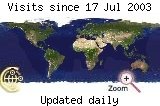An Interesting Post, With Free Summer Frieze.
Many moons ago, I wrote this post about graphics. It was about how the timeline stretches from early cave paintings to Blogging, and how a graphic travels through time, remaining long after we will turn to dust.
At that time, I was talking about my graphics, and how I live in a cave, but something new has happened.
This new thing pertains to my covers of graphics by CRM-MMM and Frances & Herbert. When one redraws these graphics, it forces one to analyse every line, and ask why it's there. Every line.
I don't pretend to understand the significance of the symbolism, I just hope I can do it justice.
The history of The Four reveals the story of their lives. If CRM-MMM's lives ended unhappily, Frances & Herbert's end was tragic.
Every line.
Covering these graphics is about as close as one can get to a past life; hands in tandem, working every line, moving together with a hundred years in between. With this particular cover of Frances's work, I felt it strongly.
It's like she is reaching from beyond the grave, placing her hand on mine and giving it a little squeeze, asking me to feel her pain.
And I do.
As promised then, another Summer frieze to cool the soul, to marvel at these graphic answers to un-remembered questions. To stare at the index of an id, and recognise nothing; as though one hundred years from now a descendant will stare at a DVD and wonder what it was for, and what message it contains. And they, like me, will not have a clue, but they will cry just the same.
At that time, I was talking about my graphics, and how I live in a cave, but something new has happened.
This new thing pertains to my covers of graphics by CRM-MMM and Frances & Herbert. When one redraws these graphics, it forces one to analyse every line, and ask why it's there. Every line.
I don't pretend to understand the significance of the symbolism, I just hope I can do it justice.
The history of The Four reveals the story of their lives. If CRM-MMM's lives ended unhappily, Frances & Herbert's end was tragic.
Every line.
Covering these graphics is about as close as one can get to a past life; hands in tandem, working every line, moving together with a hundred years in between. With this particular cover of Frances's work, I felt it strongly.
It's like she is reaching from beyond the grave, placing her hand on mine and giving it a little squeeze, asking me to feel her pain.
And I do.
As promised then, another Summer frieze to cool the soul, to marvel at these graphic answers to un-remembered questions. To stare at the index of an id, and recognise nothing; as though one hundred years from now a descendant will stare at a DVD and wonder what it was for, and what message it contains. And they, like me, will not have a clue, but they will cry just the same.
Notes on the Frieze:
This frieze, designed and executed by Frances Macdonald, was definitely used in the Macnair's studio at 54 Oxford Street in Liverpool. The picture below was taken around 1899-1900, and I have photoshopped an impression of the frieze onto the black & white photograph to give a better idea of what it actually looked like.
This frieze, designed and executed by Frances Macdonald, was definitely used in the Macnair's studio at 54 Oxford Street in Liverpool. The picture below was taken around 1899-1900, and I have photoshopped an impression of the frieze onto the black & white photograph to give a better idea of what it actually looked like.
The frieze design was probably used earlier around 1895-96, maybe for Dunglass Castle. It was drawn and painted onto brown paper, but has since been divided into a number of portions. These are held in various public and private collections.
Some information and a picture of an original piece here.
If you Google 'frances macdonald frieze' it will pop up in its millions from the poster-shop sites. I believe the last known sale of an original piece realised $47,559 at Christie's. Further info here.
Some information and a picture of an original piece here.
If you Google 'frances macdonald frieze' it will pop up in its millions from the poster-shop sites. I believe the last known sale of an original piece realised $47,559 at Christie's. Further info here.




































